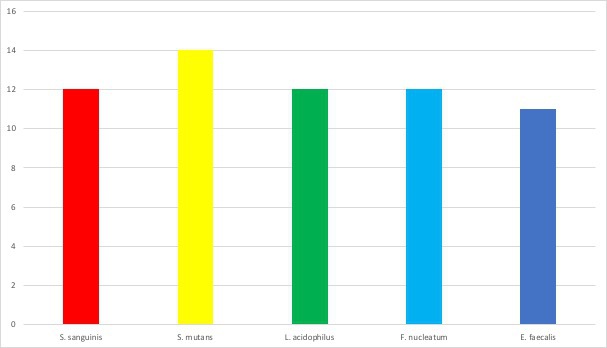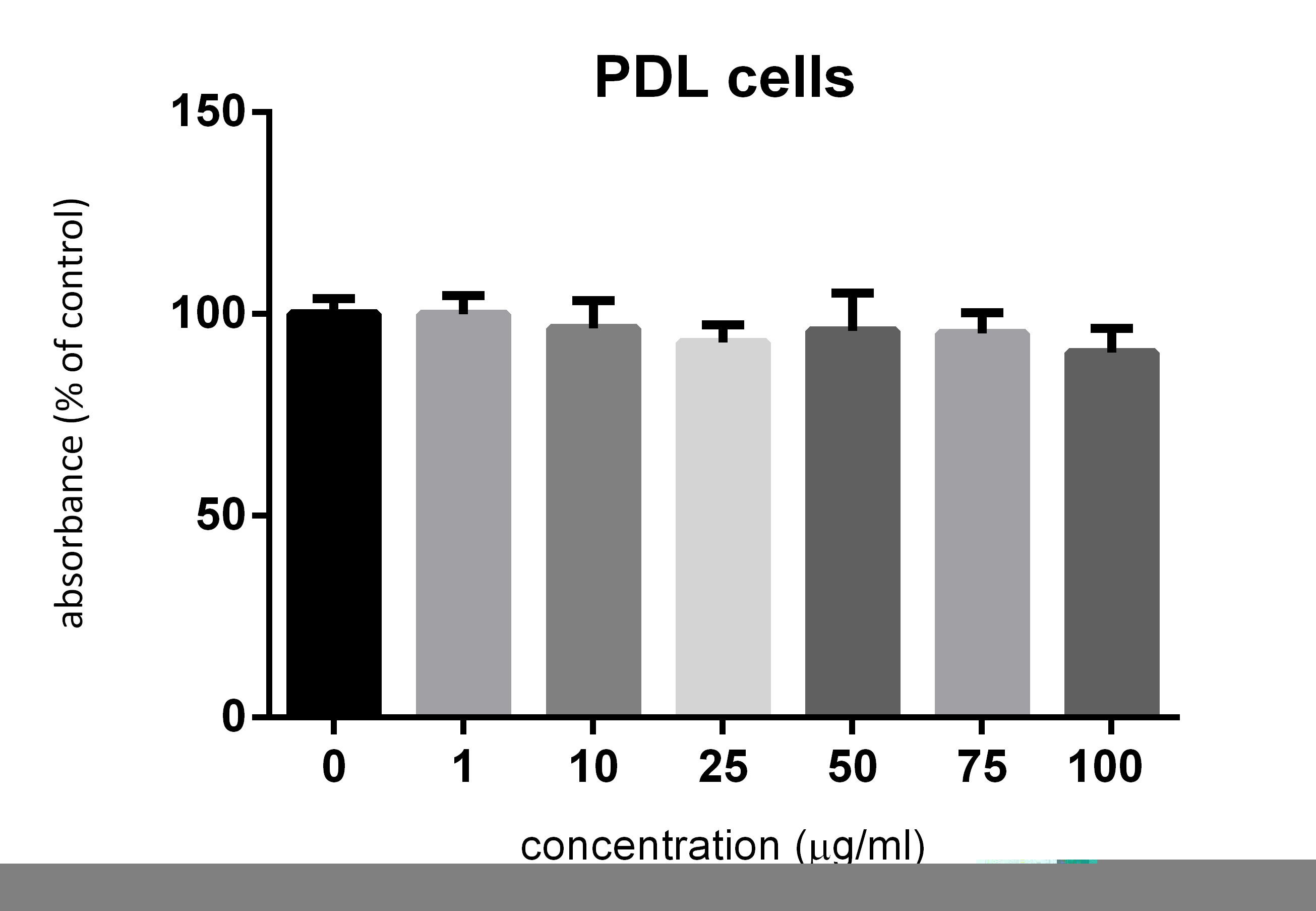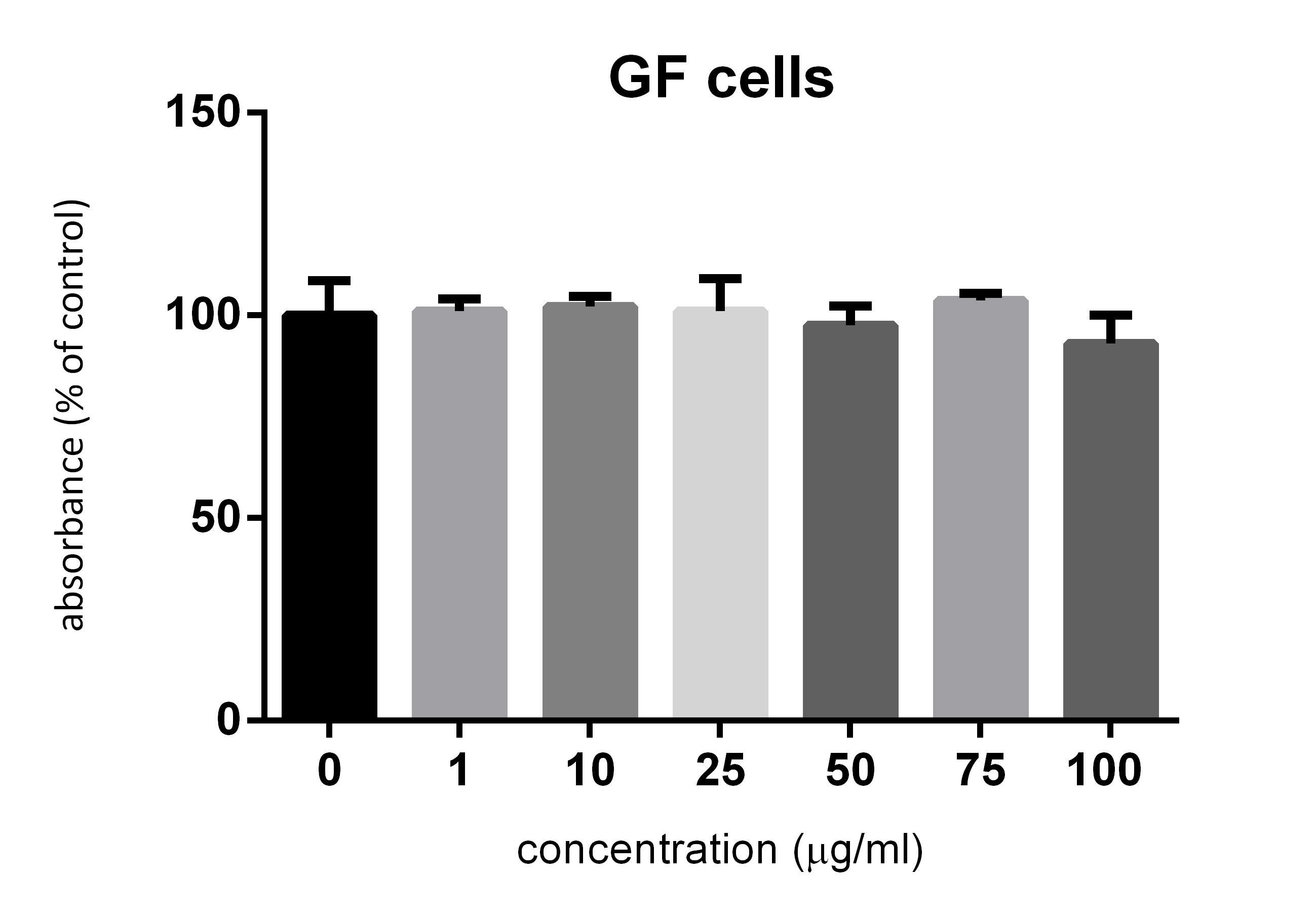IADR Abstract Archives
Pistacia Lentiscus L. Essential Oil - A Potential New Antimicrobial in Oral Healthcare
Objectives: In view of the increasing interest in developing antimicrobials of natural origin, this in vitro study aimed to screen the potential antimicrobial capacity of Pistacia lentiscus L. (PLL) essential oil against different bacterial species and to evaluate a potential citotoxicity to human oral cells.
Methods: PLL oil obtained from the leaves by hydrodistillation was chemically characterized by using GC/MS equipped with a fused silica capillary column (AT-5). As a screening test, an agar diffusion test was used. Several oral bacteria strains including Streptococcus sanguinis, Streptococcus mutans, Lactobacillus acidophilus, Fusobacterium nucleatum and Enterococcus faecalis were spread on agar plates before disks coated with PLL oil in different concentrations were added. Cell viability using periodontal ligament fibroblasts (PLF) and gingival fibroblasts (GF) was determined using WST-1 assay using PLL in a concentration range of 1 - 100 μg/ml for 72 hours.
Results: PLL contained more than 64 components of which (-)-α-pinene and terpinen-4-ol (> 16%), sabinene and α-phellandrene (± 7%); γ terpinene (6%) and four other constituents (4 %) (α-terpineol, (-)-(1S)--pinene, -phellandrene and α-terpinene in the order) (Table 1). PLL formed inhibition zones against all strains: the highest values were measured against S. mutans (14 mm), L. acidophilus and E. faecalis (12 mm) (Fig. 1). Up to a concentration of 100 μg/ml no cytotoxicity was found against PLF and GF cells (Fig. 2 and 3). Using one-way ANOVA no significant differences were confirmed between PLL affected cells and control cells.
Conclusions: These preliminary data suggest that PLL may have potential as an antimicrobial in prevention and therapy of oral diseases.
Methods: PLL oil obtained from the leaves by hydrodistillation was chemically characterized by using GC/MS equipped with a fused silica capillary column (AT-5). As a screening test, an agar diffusion test was used. Several oral bacteria strains including Streptococcus sanguinis, Streptococcus mutans, Lactobacillus acidophilus, Fusobacterium nucleatum and Enterococcus faecalis were spread on agar plates before disks coated with PLL oil in different concentrations were added. Cell viability using periodontal ligament fibroblasts (PLF) and gingival fibroblasts (GF) was determined using WST-1 assay using PLL in a concentration range of 1 - 100 μg/ml for 72 hours.
Results: PLL contained more than 64 components of which (-)-α-pinene and terpinen-4-ol (> 16%), sabinene and α-phellandrene (± 7%); γ terpinene (6%) and four other constituents (4 %) (α-terpineol, (-)-(1S)--pinene, -phellandrene and α-terpinene in the order) (Table 1). PLL formed inhibition zones against all strains: the highest values were measured against S. mutans (14 mm), L. acidophilus and E. faecalis (12 mm) (Fig. 1). Up to a concentration of 100 μg/ml no cytotoxicity was found against PLF and GF cells (Fig. 2 and 3). Using one-way ANOVA no significant differences were confirmed between PLL affected cells and control cells.
Conclusions: These preliminary data suggest that PLL may have potential as an antimicrobial in prevention and therapy of oral diseases.



